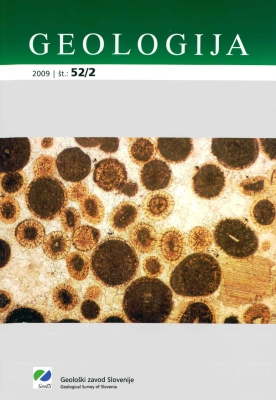Unevenly spaced time series analysis: Case study using calcimetry data from BV-1 and BV-2 boreholes in Ljubljansko barje (central Slovenia)
DOI:
https://doi.org/10.5474/geologija.2009.016Abstract
Statistical analyses of calcimetric data from boreholes BV-1 (north of Podpeč) and BV-2 (south of Črna vas) on Ljubljansko barje in central Slovenia are given. The original data are represented as unevenly spaced time series that are translated into evenly spaced time series. To calculate the interpolation weighted influence function, a model based on the power correlated influence is defined. Parameter selection is performed based on the maximum entropy principle. In the reconstructed time series, autocorrelation and Fourier power spectrum analyses are performed. In both time series, a transition from white noise to red noise was detected. Such behaviour can be described by a Lorentz process. Red noise is the result of a stochastic process with long-term memory. This effect can be seen predominantly in the autocorrelation function of borehole BV-1. In the calcimetric time series of borehole BV-2, periodicity with a period between 10.0 m and 12.5 m was also detected. We suppose that this period reflects climatic fluctuations during the Quaternary Period.Downloads
How to Cite
Brenčič, M. (2009). Unevenly spaced time series analysis: Case study using calcimetry data from BV-1 and BV-2 boreholes in Ljubljansko barje (central Slovenia). Geologija, 52(2), 165–174. https://doi.org/10.5474/geologija.2009.016
Issue
Section
Articles

